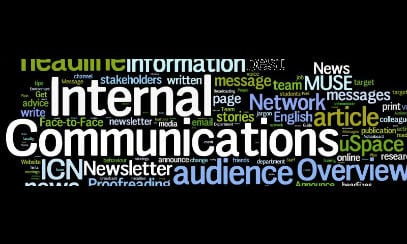
Change is hard. It comes in spades with mergers & acquisitions (M&A), which some believe could occur with rapidity in the coming weeks and months.
In media, where size and scope are valuable, things are moving furiously already. Fresh off a court’s approval of its $85 billion acquisition of Time Warner June 12, AT&T said June 25 it was in pursuit of digital advertiser AppNexus, an asset it needs to assemble a media empire.
Also in media, behemoths Comcast and Disneyare battling for vulpine media empire 21st Century Fox.
While in communications M&As are far smaller than those noted above, a slew of modest mergers and a larger one, the late-February combination of Burson-Marsteller with Cohn & Wolfe, have occurred.
Poor Communications and M&A Problems

George Washington University Graduate School of Political Management
An issue with M&As is companies often forget a successful merger is “about people, not Xs and Os,” says Larry Parnell, a former corporate communicator and PR firm executive who heads the strategic PR program at George Washington University’s graduate school of political management. As a result, companies often give short shrift to the importance of aligning cultures after a merger, he adds. Another casualty is internal communications to employees about their future.
Part of the problem, he says, is communicators often are summoned only after the resolution of legal and financial issues. Yet this is when “the real heavy lifting [of a merger] begins,” Parnell insists. Many corporate leaders are gone by that time, though they leave instructions for communicators and managers to “Go figure it out,” Parnell says.
This disregard for culture and internal communication leads to dysfunction that bleeds throughout the merger. As a result, the promised financial goal of M&As, increasing shareholder value, is achieved just one-third of the time.
But back to change, a brand need not be involved in a gargantuan M&A for its employees to experience change. A garden-variety restructuring will do the trick, as will a sudden or gradual departure of a valued employee or employees.
With this background, we asked PR pros to offer best practices for communicating internally during times of change.
Their edited responses are below.
 Katina Arnold
Katina Arnold
VP, Corporate Communications, ESPN
When you’re in a situation that’s public, unsettled or filled with change, you should communicate an internal plan as soon, and as directly, to employees as you can. In employees’ minds, no news equals bad news. This is why communicating quickly in a variety of ways—including employee meetings where employees can ask questions, through email, the intranet and message cascade with managers—achieves the best results.
You don’t have to have all the answers when you begin to communicate, but you should try to relay the company’s vision, state the reasons why you can’t talk about certain things and at least demonstrate a clear plan to move forward in a smart and thoughtful way.
We used to say, “Expect internal messages to show up externally within a few days.” Today, in the digital age, they re-appear [externally] within a few hours, minutes or even seconds. You must adopt a mindset that anything you say internally could be immediately consumed externally.
We still try to give employees a first look at certain announcements and personnel changes so they read about it from us versus the press, but typically we try to time our internal and external announcements as closely as possible.
 Morry Smulevitz
Morry Smulevitz
Head, Corporate Communications/Media Content
AbbVie
When communicating change, I am reminded of the Socrates quote: “The secret of change is to focus all of your energy not on fighting the old but on building the new.”
With that in mind, my advice is for PR practitioners to consider these 5 C’s:
Clarity: No matter how complex the scenario, clear and honest delivery of the vision, rationale, benefits and process for change is critical. Thank employees for their patience, cooperation and continued focus along the way.
Credibility:Employees recognize when they aren’t getting the whole story. If all the details can’t be shared for legal or other reasons, then say so. Also, it is important to ensure leaders across the organization are consistent in delivering the narrative and messages.
Compassion: It’s hard to deliver tough news in times of uncertainty, but it’s harder to be on the receiving end. While communications don’t need to be apologetic, consider the emotional impact to employees who don’t have the broader view of decision makers.
Commitment:Highlight successes, provide updates on progress, and offer employees a resource for questions. Reinforce the change narrative and weave it into your corporate language. As significant milestones are met, town halls beat emails every time.
Cascade:Nail the flow of information from the start. Depending on the degree of change, consider starting at the top of the enterprise. Equip directors and line managers to discuss in more detail with their teams in succession, utilizing a variety of resources, including an FAQ.
 Robert Hastings
Robert Hastings
EVP/CCO/Chief of Staff, Bell
The most important and impactful thing an organization can do during times of significant change is lead. Leadership in the form of company leaders, armed with a good communications plan and a supportive communications team, make all the difference. Tell employees what’s going on, explain what it means to them, listen and respond to their concerns, show them leaders are committed and like the old commercial said, “Rinse and repeat.” The one thing you can’t overdo during periods of significant change is to over-communicate.
 Marie Andel
Marie Andel
EVP, People & Culture CSAA Insurance Group
Communicating about change is a constant. A few learnings:
1). Avoid jargon, acronyms and corporate speak. Find ways to keep the change story relevant and interesting. When you can, make it fun!
2). Focus on everyone’s favorite radio station: WIIFM (“What’s In It for Me?”). Remember this when explaining the impact of change. Communicate how change will benefit employees as well as customers.
3). Explore fresh ways to tell the change story. For example, make use of video and infographics, deploying different channels aimed at specific audiences, and integrate it broadly so your messages become part of the fabric of the company, rather than one-off communications.
4). Check in with employees to gauge where they are on the change curve, and use that to tailor your messaging. Offer employees frequent updates—don’t wait for big news.”Build credibility by being transparent about setbacks as well as successes.
5). Consider leveraging external media to tell your change story. News stories can be promoted internally to reinforce the progress you are making and inspire employees, while enhancing brand and reputation with potential customers and partners.

Lauren Hodapp
Director, Internal Communications
Conservation International
1). Foster dialogue. Staff and executives alike benefit from opportunities to talk openly in moments of change. Last year, Conservation International’s founder/CEO stepped down after 30 years. We fostered dialogue with staff throughout the succession process by conducting multiple Town Hall discussions—on time zones appropriate for our globally dispersed staff—where anyone could ask any questions. Our staff appreciated the opportunity for dialogue and our executives gained insight and perspective by listening to and reflecting on these staff questions. And the sessions set the tone for further open communication with the new leadership team.
2). Prioritize staff by emphasizing transparency. Staff appreciate transparency, particularly during institutional shifts. As ESPN’s Katina Arnold mentioned earlier, sharing changes in a timely and authentic way can be more important than settling on the perfect message, waiting for every piece to be final or sharing only part of the story.
We started communicating with staff about our CEO’s plans to step down very early and introduced the succeeding leadership team to staff fewer than 24 hours after the decision was finalized. The priority was on sharing this news with staff quickly—ahead of our partners, community, and the wider world—because it was critical for the Conservation International family to hear the news first.
 Ken Peterson
Ken Peterson
Senior Communications Strategist Monterey Bay AquariumWe use a few consistent methods to communicate when there’s big news to share, some of it involves change communications. Key members of our leadership team will send an all-staff email when there’s a major announcement—often a new business partner or a policy success that helps us advance our mission, but also reorganizations and adoption of new strategic priorities.
We share and celebrate positive news in face-to-face forums as well: at bi-monthly, all-staff meetings and monthly meetings of manager-level staff. In addition we communicate directly at regular work-group and cross-divisional meetings.
One of our most productive communications tactics is a story board that serves as an information-sharing, planning and coordination group for news and activities we might want to share through our earned, owned and paid channels—from our website and social media, to earned media outreach.
Another tactic is a daily stand-up meeting of frontline staff, who go over operational issues but where they also share updates on institutional changes and news.

Barbara Moreno
Executive Director, Communications
San Diego Convention Center Corporation
Having gone through reorganizations, management changes and rebrands, there’s one thing I’ve learned: communications directors are instrumental to success. That is because we are the gatekeepers, brand managers and message leaders. While most of us focus on our external messaging much of the time, during periods of change, building brand ambassadors starts on the inside.
1). Know your audience. Yes, this is a tip you are likely to find at the start of nearly every PR initiative, yet too many of us overlook it or fail to give it the importance it deserves. It is imperative that you understand whom you are talking to and know how employees are perceiving changes that are occurring in the organization. Hold an employee meeting, allow employees an opportunity to voice questions through online forms or old-school note cards. Run through scenarios and questions. In times of change, employees may not have the courage to speak up. It is part of the communicator’s job to empower them.
2). Over-communicate. This can’t happen enough. Tell your internal audience members what you want them to know, then tell them again and again…and again. Also make sure your leadership team is well aware of each other’s roles and responsibilities. Times like these call for lots of meetings, and while we usually dislike meetings, they are a key part of communications strategy.
3). Make yourself available. Accountability and integrity at the start are necessary to a successful launch of any new team member, role or product.
 Bob Pearson
Bob Pearson
Vice Chair/Chief Innovation Officer W2O Group
It’s not a secret that change makes most of us uncomfortable. When we introduce new people, structures or products to our organizations, we all need time to process and we do it in different ways.
From 30 years of being involved in change and change communications, I find the following to be critical to success:
Authenticity:Are staff hearing directly from leaders in an unscripted manner or are they merely hearing corporate messaging that feels a bit too over-prepared?
Storytelling:Think of how storytelling can be used to better explain change and improve the value of your organization. Communicators have a choice: we can help employees discover the power of progress via our communications and storytelling or we can pump out all of the necessary content, check off our list and have far less success.
3&3: Great communicators know how they want to shape the organization over three years, yet always ensure they take the right steps every three months with an eye on that vision. They know every step matters on the journey.
 Ewan Main
Ewan Main
CEO
Daggerwing Group (Ketchum’s Change Management and Internal Communications Consultancy)
During times of change, silence is not golden. Keeping all the stakeholders talking, collaborating and storytelling is critical to managing the human factors that can undermine the success of major initiatives such as restructurings and transformations.
There are three priorities for executive sponsors of change.
Articulate a very clear picture of the future, in as positive a light as you can, even if the change is tough. Everyone needs to understand exactly what the change means for them and what their role is in getting there.
Make sure leaders own the communications about the change and are talking about it with employees every day. Focus on early successes to build momentum and keep sharing and celebrating milestones along the way.
Ensure employees are part of the conversation – involvement equals commitment. Change is much easier if people feel they are part of shaping it, as opposed to feeling the change is something being done to them and that they have no control over what is happening.
![Rebecca_Fannin_Headshot[1]](https://www.prnewsonline.com//wp-content/uploads/2018/07/rebecca_fannin_headshot1.jpg) Rebecca Fannin
Rebecca Fannin
Managing Director, Change & Internal Communications
Hill & Knowlton Strategies
Employees can be resistant to change even when the outcomes are beneficial. This is why many campaigns fail—they address how we think people should be, rather than how they really are.
We counsel clients to create internal communications and engagement strategies based on behavioral science, with an understanding of core motivations around purpose and passion and the relationship between culture and performance inside their company.
It’s key to assess and build credibility for leadership to chart the new course. Employees should hear a steady cadence of communications from leadership. These messages should be transparent and frequent to show progress made, address ongoing challenges and engage employees around new opportunities.
Direct managers should be engaged as early as possible, since they will hear directly from employees about questions and concerns.
This qualitative input should inform near-term strategy to better align to where employees are in the transition process.
When tough choices need to be made, they should be linked with specific, tangible improvements and include benefits to employees.
Finally, the narrative and activations should be tailored to address employees’ questions about their role in the company, individual growth and support for mission, and ways to align behaviors to new goals.
 Heather Kruse
Heather Kruse
VP, Human Resources
Rogers & Cowan
At Rogers & Cowan, we believe employees are our best brand ambassadors. That’s why CEO Mark Owens has an open door policy and communicates directly with staff whenever possible. We regularly employ Town Halls, which can be joined in-person and by Skype from all our locations.
In addition, we announce changes via email and correspondence with our parent company, Octagon, that disseminates information to our family of network sister agencies.
As we are in the integrated marketing and communications business, we understand the importance of effective communications. As others have said, being first to brief employees of change is critical. Not only do we want to be the first to inform our employees of news, we want to help them understand why change is happening and listen to and address any concerns they may have.
It is our belief that engagement, transparency and trust are key factors leading to happier, more productive employees who advocate on behalf of the agency.
This type of brand advocacy in turn leads to higher retention rates, the ability to attract better talent and more new business.
 Jason Meyer
Jason Meyer
Director, APCO Worldwide
In times of significant change, proactive, well-planned communication cannot be emphasized enough. While employees may experience a wide range of transitions to their titles, duties or career trajectory, it is paramount they understand a roadmap—underpinned by stability for the organization—exists.
Three fundamental principles leaders must keep in mind when embarking on a change communications initiative:
1.) Tailor communications to ground the rationale for change in the core values of the blended organization. When merging cultures, it is inevitable that various attributes of a workplace culture appealed to the existing workforce, which attracted them and has kept them there. Do the due diligence to understand which values and attributes drove affinity for workplace culture and be intentional about outlining how the future state of the combined organization will reflect these values. Change will be easier to understand when placed in the context of a solid, welcoming culture.
2.) Ensure leaders and managers at all levels are briefed on key details and understand when and how to most effectively engage those who report to them with key information.As others have said here, change communications should never feel like a top-down exercise. Clear leadership visibility bolstered by enthusiastic surround sound is the way to go.
3.) Establish a feedback loop with employees in tune with your organization’s culture.Whether through online surveys, townhalls or other means, ensure your people know they are heard and that you plan to be responsive to their thoughts during the transition.
 James Bailey
James Bailey
Professor of Leadership
George Washington University School of Business
When facing a major change, communication across organizations should adhere to three principles.
First, it should be as transparent as possible. The rumor mill already is grinding. Clear, honest information frames the change and lends credibility to management.
Second, it should be positive in tone. People are worried, even afraid, of what the change means to them. A positive tone, if in earnest, will help calm the concerns of employees.
Third, communications should be consistent. As soon as messages start to contradict, the conception that no one is in charge sets in and a virtual panic ensues.
NOTE: This content appeared originally in PR News, July, 2018. For subscription information, please visit: http://www.prnewsonline.com/about/info
CONTACT: [email protected] [email protected] [email protected] [email protected] [email protected] [email protected] [email protected] [email protected] [email protected] [email protected] [email protected] [email protected] [email protected] [email protected]
